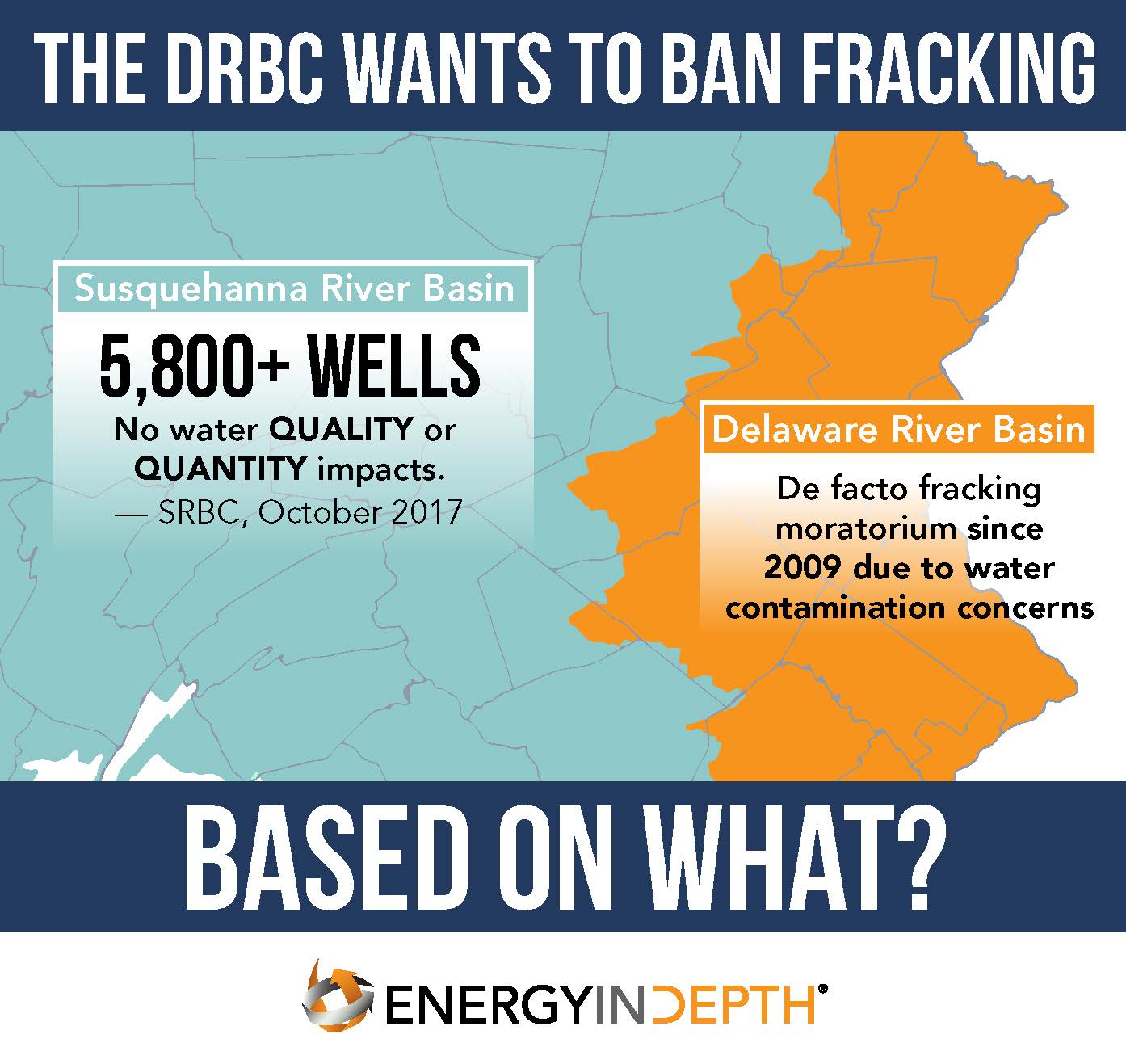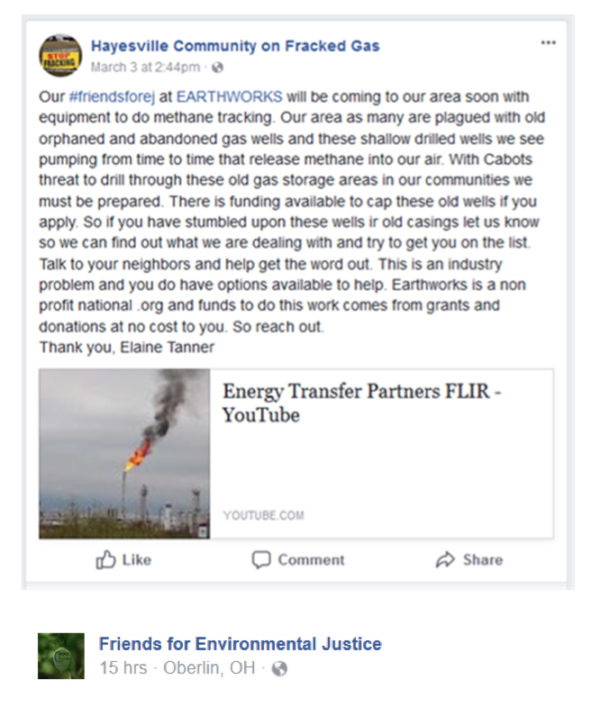There is a lot of misinformation circulating about a proposed Potter Co, Pa., wastewater treatment facility that a small business from Pittsburgh has designed to support shale development in the region. And unfortunately, an outburst by an anti-fracking activist during a meeting Monday night kept the company that is proposing the new facility from dispelling this misinformation in front of a packed house.
Monday’s meeting had to be cut short after activist filmmaker Josh Pribanic threw a temper tantrum over the order of speakers at the meeting. Pribanic wanted to speak last and threw a fit when he was called to speak sooner, leading to profanities being yelled at the Coudersport Area Municipal Authority (CAMA). You can watch part of the exchange in the following video, but WARNING: The language gets very colorful near the end.
Listen to the full exchange:
https://www.energyindepth.org/wp-content/uploads/2018/03/Josh-Pribanic-Last-Speaker.m4aPribanic’s outburst ultimately denied the company that has proposed the new facility, Epiphany Water Solutions, the opportunity to give CAMA updates on the project and address misinformation that continues to circulate. With that in mind, here are the facts on the project.
What the Wastewater Treatment Facility Will and Will Not Do
The proposal is for a $1 million facility that will serve as a centralized location to treat production water from the shale development process. The facility will use a two-step process involving metal precipitation and distillation to treat the water to exceed drinking water standards.
The completion of the treatment process will ultimately result in distilled water, salt and other solids – all of which can potentially be recycled for other uses. Epiphany has volunteered to recycle water back to industry while testing confirms the facility is working as promised. Only after testing shows the plant works as intended, would Epiphany send any water, not needed for well development activities in the field, to CAMA.
Water Treatment and Recycling Isn’t New In Pa.
One of the oft-repeated claims Monday night was that, because this facility is an improvement on existing technology, it would be turning the region into an “experiment.” It’s important to note that the treatment of produced and flowback water is not new in Pennsylvania. Following a voluntary initiative that began in 2011, the majority of shale waste water in the Commonwealth is treated on site or at centralized facilities to be recycled and reused in future operations or released back into the hydrological cycle.
In fact, just a short distance away in Lycoming County, Eureka Resources has been safely pretreating, recycling and disposing of shale waste water – including distillation – at a centralized facility since 2008. The company has been so successful in handling this water that it has added two additional facilities in Williamsport and one in Bradford County, and is looking to expand into West Virginia and Ohio.
It’s also not a new concept for Epiphany. The company received funding in 2009 from Innovation Works, a partner of the Ben Franklin Institute that holds an annual innovation contest in the Appalachian Basin, to create onsite water treatment units that use concentrated solar energy for distillation. Those units have been used on well sites in the region, including in Potter County, since 2014. This project simply takes the technology Epiphany has already successfully used and builds it in on a grander scale at a centralized location.
Concerns About Radioactivity
The biggest concern expressed Monday night seems to surround the potential for radioactive materials to be on site at the facility or released into the environment. But the Pennsylvania Department of Environmental Protection (DEP) conducted a study in 2015 that found that “there is little potential for harm to workers or the public from radiation exposure due to oil and gas development.” In particular, the study found, “There is little potential for radiation exposure to workers and the public at facilities that treat O&G wastes.” This part of the analysis, which the Epiphany project would fall under, included Publicly Owned Treatment Works, Centralized Waste Treatment, and Zero Liquid Discharge facilities.
Retired licensed drinking water operator and chemistry instructor Peter Palumbo wrote a letter to the Olean Times Herald recently to correct some of the misinformation about this:
“The difference in these brines is in the proportion of chemical elements that make up the salt. All brine in Pennsylvania and New York contains some radium ions. The deeper the brine source, the more radium ions in the salt. The percentage of ‘good’ salt or ‘bad’ salt does not matter.
“Distillation removes all salts, regardless if the salt is radioactive or not. The nuclear properties of radium does not prevent it from either being precipitated out of solution or being left behind by distillation. The Epiphany plant will actually use a two-step process which essentially removes the poisonous heavy metals from the sodium and potassium salts. This results in a reduction in the bulk waste of solids to be hauled away to disposal sites. (emphasis added)
Andy Lombardo, senior vice president of Perma-Fix Environmental Services, spoke at both meetings to explain that the two-step process being proposed is “the best ever seen” and that frequent testing will occur for traces of radioactivity in the effluent (water), salt and metal cakes. As Salamanca Press reported,
“Lombardo said the risk has been overblown by some opponents.
“‘There’s no getting away from radioactivity,’ he said, with sources of ionizing radiation coming from space and from underground at all times — even the scale inside of a hot water tank is radioactive on low levels. ‘We live in a radioactive world.’
“At similar facilities in the state, Lombardo said he has never seen a facility with released radioactivity issues.” (emphasis added)
Conclusion

Source: Alchetron
Multiple members of the Seneca Nation said Monday night that they will accept no risk and “no levels of contaminants in water.” “Zero risk” is not a realistic approach to anything in life, including the oil and gas industry. And supporting shale development or the Epiphany project certainly does not mean that a person does not also love the environment or want to protect it. Whether you call God’s Country home, have fond memories of childhood visits as many of us do, or have only seen it in pictures, it’s easy to see why it is not only aptly named, but why people in this part of the state are so protective of it. But there is no either-or choice here. As Upper Alleghany Watershed Association President Frank Weeks said during his DEP testimony in January,
“Water quality is number one in Potter County in importance. This is a biggie for us… If Epiphany can deliver what they say they’re going to deliver, this is going to be a win for this watershed.”
And as Trout Unlimited – God’s Country Chapter President Dr. Peter Ryan said during the same DEP hearing,
“Epiphany has a solution. I’ve heard their presentation now four times. And I have a background in education, chemistry and biology, and the process makes sense to return the distilled water back to the industry in a truck, to take it back to the well…that’s one of the options is to recycle that back to the well, and the other is to return it to the river from which this water first came. That’s a win-win.”









 Likewise,
Likewise, 
 Midstream PA brings together midstream operators, commercial suppliers, training providers, and regulatory overseers to discuss opportunities around midstream development throughout Pennsylvania and beyond.
In early June 2017,
Midstream PA brings together midstream operators, commercial suppliers, training providers, and regulatory overseers to discuss opportunities around midstream development throughout Pennsylvania and beyond.
In early June 2017, 